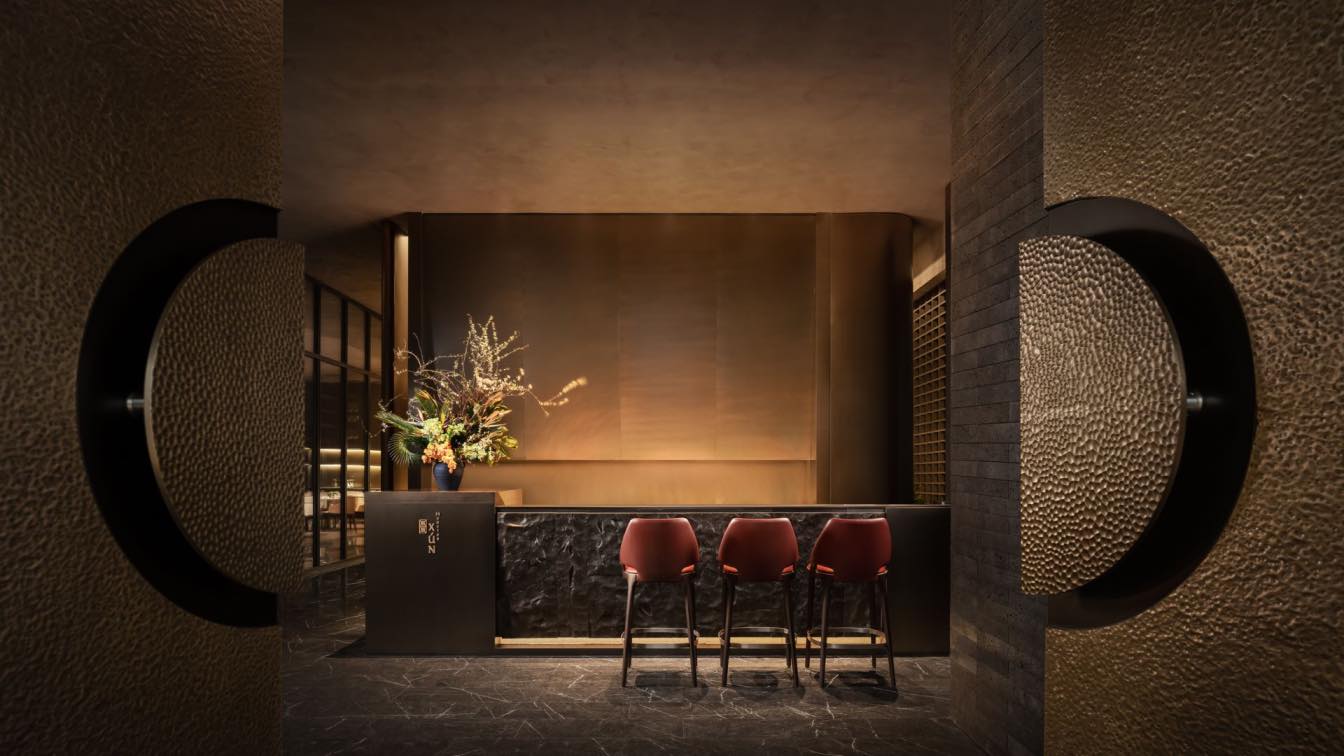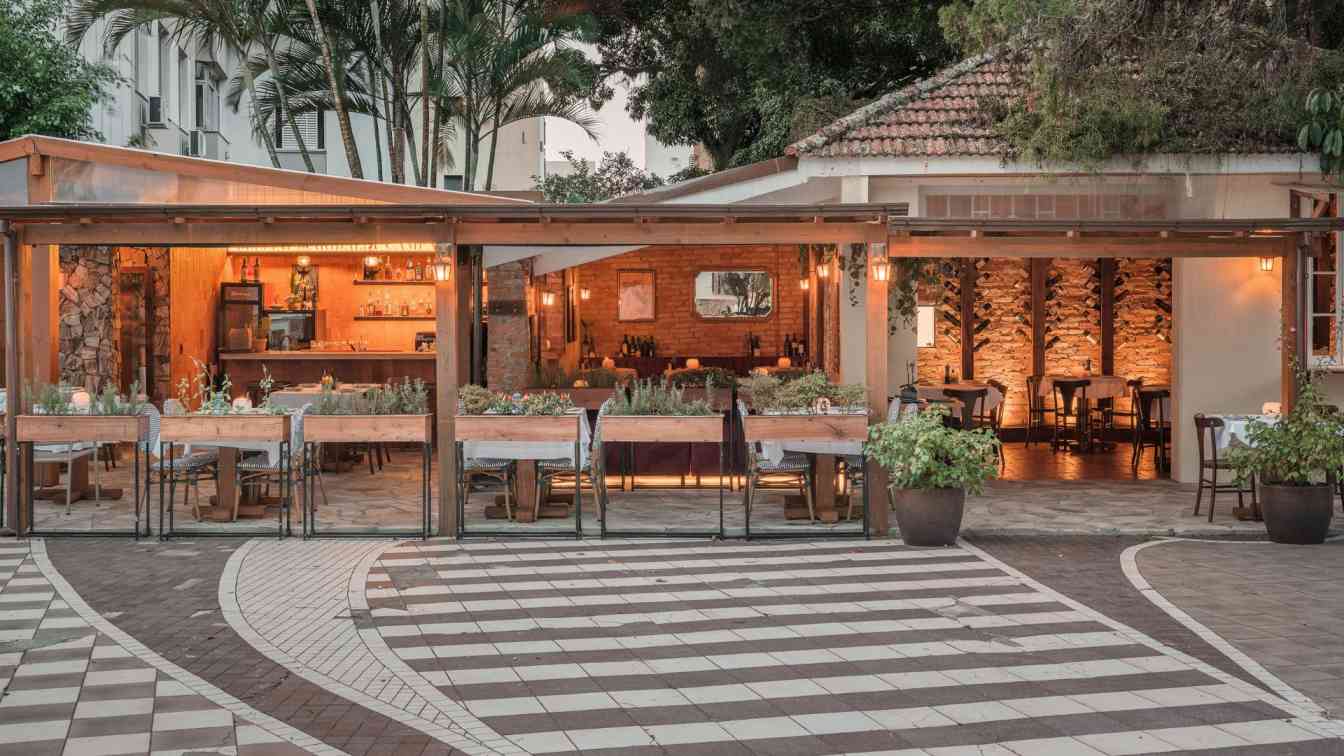Rustam Khamdanbayev: The interior of the Uruk restaurant aims to move away from the clichéd solutions typical of Eastern interiors: floral patterns and ornaments, pointed arches, mosaic panels, and bright color schemes. Instead of creating yet another stereotypical "Eastern" space, the goal was to convey the atmosphere with a subtle presentation of stylized yet recognizable elements of the decor, craftsmanship, and everyday life of nomadic Turkic peoples. The restrained color palette forms a cohesive and complete image of the interior, with the main highlight being kinetic installations specifically developed for this project by me.
These dynamic compositions are inspired by characteristic items of decorative and applied arts, everyday objects, and the culture of nomads: saukele (women's headdress), taqiya (men's headdress), kobyz (bowed musical instrument), kese (dishes), taikazan (exhibit from the Mausoleum of Khoja Ahmed Yasawi), dombra (stringed musical instrument), yurt (nomadic tent), and more. The elements rotate around their axis by 360 degrees, and their ribbed structures create a fascinating play of light and shadow thanks to accent lighting from spotlights.
The wall finishes are executed in a monochrome "steppe" palette of ocher tones, reminiscent of adobe—a traditional clay building material. The contrasting veneer used in the furniture and wall finishes features the intricate patterns of adras—a traditional handmade fabric made from silk and cotton. Completing the composition are straw lampshades that evoke the sun-drenched gardens of southern regions, adorned with the melodic singing of quails in woven straw cages—turkavak. Thus, the monochrome and minimalist finish, adorned with a mix of traditional and stylized decor, creates a subtle, not immediately obvious but distinctly recognizable Eastern ambiance in the interior.

















































